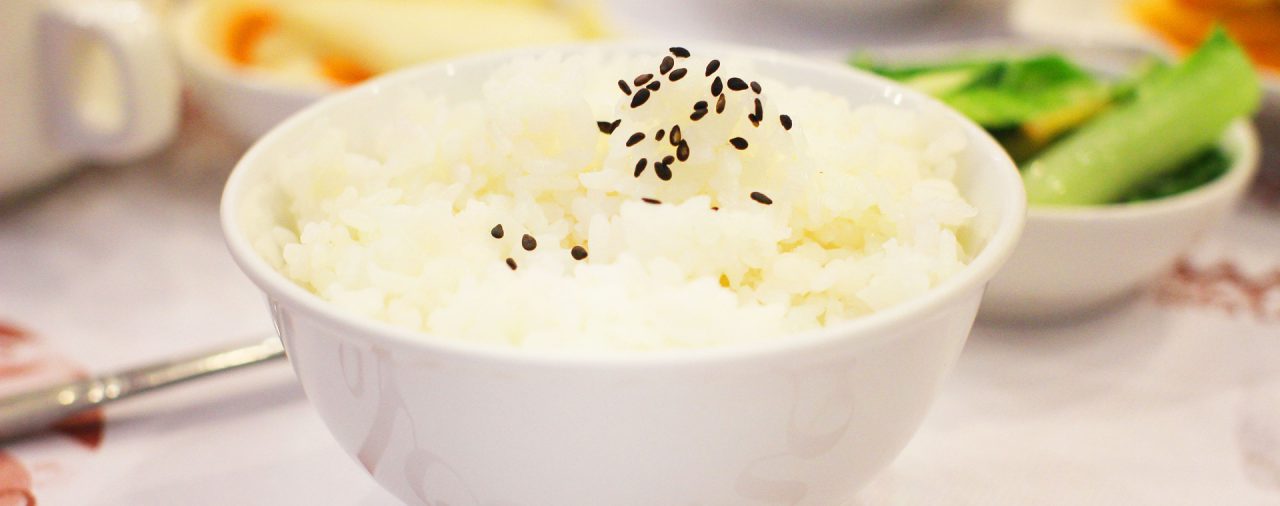The increasing prevalence of type 2 diabetes mellitus globally is mostly attributed to insulin resistance and can be prevented through dietary means. By maintaining a low and stable blood glucose concentration through healthy dietary intervention, diabetes can be aptly managed and prevented. One such measure is by using the glycemic index to help control blood sugar.
The glycemic index (GI) is a well-established indicator of the blood glucose raising potential of a carbohydrate food. Intake of low GI response food has been observed to reduce the incidence of diabetes, hyperlipidemia and cardiovascular disease. On the other hand, regular consumption of high-GI diets over time is associated with an increased risk for type 2 diabetes mellitus, obesity, breast cancer, cardiovascular disease, and a reduction in cognitive functions. 1
Rice, which is the principal staple and energy source for the rice-eating Asian population, is considered to be a high glycemic index (GI) food. Being a major contributor to the glycemic load in rice-eating populations, there is an increasing concern of the rising prevalence of insulin resistance as a result of the consumption of large amounts of rice. Devising ways and means of reducing the glycemic impact of rice in this population is therefore imperative. 2
The glycemic index alone should not be the sole determinant of a healthy diet as it can be influenced by the quantity and type of food that is eaten. Rice is not a high glycemic food when consumed at levels typically found in Western diets compared to Asian diets. Taking olive oil or something acidic, like vinegar or lemon juice, can slow the conversion of starch to sugar, and so lowering the glycemic index. 3
Amino acids, the constituents of protein have also been reported to reduce the glycemic response of carbohydrate-rich foods. However, because of the bitter flavour of amino acids, they have rarely been used to reduce glycemic response. Chicken essence, a more palatable form of the amino acid mixture can be a good alternative.
Sixteen healthy Chinese males were served either 68 or 136 ml of chicken essence, 15 or 30 minutes before consumption of white rice during a scientific study. The rise of blood glucose and plasma insulin concentrations were measured at fasting and subsequently every 15 minutes after consumption of the white rice until the 60 minute mark. Subsequent blood samples were then taken at 30 minute intervals until the 210 minute mark. 4
Co-ingestion of 68 ml of chicken essence with white rice produced the best results in reducing the peak blood glucose and glycemic response of white rice, without increasing insulin response. Results of this study may indicate that amino acid mixtures in the form of chicken essence can help to prepare pancreatic β-cells to secrete insulin and stimulate peripheral tissues for the uptake of glucose. Consequently, the use of ready-to-drink amino acid mixtures such as chicken essence may be a useful strategy to improve the glycemic response resulting from high-GI rice diets consumed in Asia.
References:
1 Skerrett P. Use glycemic index to help control blood sugar – Harvard Health Blog. Harvard Health Blog. Published 2018. Accessed December 19, 2018.
2 Kaur B, Ranawana V, Henry J. The Glycemic Index of Rice and Rice Products: A Review, and Table of GI Values. Crit Rev Food Sci Nutr. 2015;56(2):215-236. doi:10.1080/10408398.2012.717976
3 Glycemic index: A helpful tool for diabetes?. Mayo Clinic. Published 2018. Accessed December 19, 2018.
4 Soong Y, Lim J, Sun L, Henry C. Effect of co-ingestion of amino acids with rice on glycaemic and insulinaemic response. British Journal of Nutrition. 2015;114(11):1845-1851. doi:10.1017/s0007114515003645

